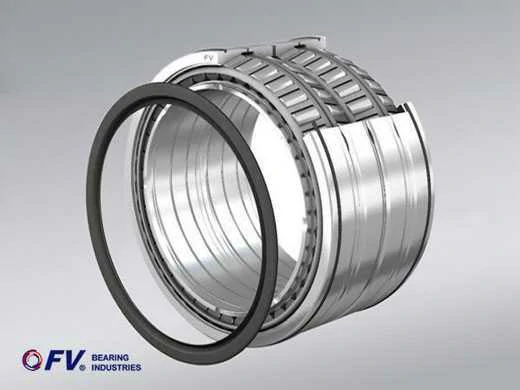Angular Contact Ball Bearings- What You Need to Know
Angular contact ball bearings are a type of rolling-element bearing designed to support combined radial and axial loads simultaneously. They have raceways in the inner and outer rings, which are displaced with respect to each other in the direction of the bearing axis. This means they can support radial and axial loads from both directions.
These bearings are commonly used in applications where there is a need for high precision and rigidity. They are widely employed in machinery that requires high-speed performance, such as machine tool spindles, precision rotary tables, and vertical boring mills. Angular contact ball bearings are also utilized in pairs or sets to support axial loads in both directions.
Structure of Angular Contact Ball Bearings
The structure of angular contact ball bearings consists of inner and outer rings, ball elements, and a cage. The inner and outer rings have raceways, which allow the balls to move along them. The angle of contact between the balls and the raceways should match the relative proportions of radial and axial loads that the bearing can support. Typically, the contact angle is designed to be 15°, 25°, 30°, or 40°, with the greater the contact angle, the higher the axial load-carrying capacity of the bearing.
The cage, usually made of steel, brass, or synthetic resin, keeps the rolling elements evenly spaced and prevents them from colliding with each other. This design ensures smooth and efficient rotation of the bearing components, reducing friction and wear, and extending the bearing’s operating life.

Benefits of Angular Contact Ball Bearings
Angular contact ball bearings offer numerous advantages in various applications. Their ability to support combined radial and axial loads makes them versatile and suitable for use in high-speed and high-precision machinery. The ability to support both types of loads simultaneously allows for simplified designs and compact arrangements in machinery.
These bearings also provide high rigidity and low vibration levels, contributing to improved machine accuracy and reduced noise levels. Additionally, their design allows for easy mounting and dismounting, facilitating maintenance and repair processes. Overall, angular contact ball bearings are crucial components in ensuring the efficiency and reliability of rotating machinery across different industries.

Considerations in Selecting Angular Contact Ball Bearings
When selecting angular contact ball bearings for specific applications, several factors need to be taken into consideration. These include the required load-carrying capacity, operational speed, temperature, and lubrication conditions. It’s essential to choose the right contact angle and bearing preload to ensure optimal performance under varying operating conditions.
Proper installation and maintenance practices are also critical in maximizing the service life of angular contact ball bearings. Regular inspection, lubrication, and monitoring of operating conditions can help prevent premature wear and failure, ensuring the continuous and reliable operation of the machinery.
In conclusion, angular contact ball bearings play a vital role in supporting high-speed and high-precision machinery, offering numerous benefits and advantages when properly selected and maintained. Understanding their structure, benefits, and selection considerations is essential in ensuring their optimal performance and longevity in various industrial applications.
.webp)

